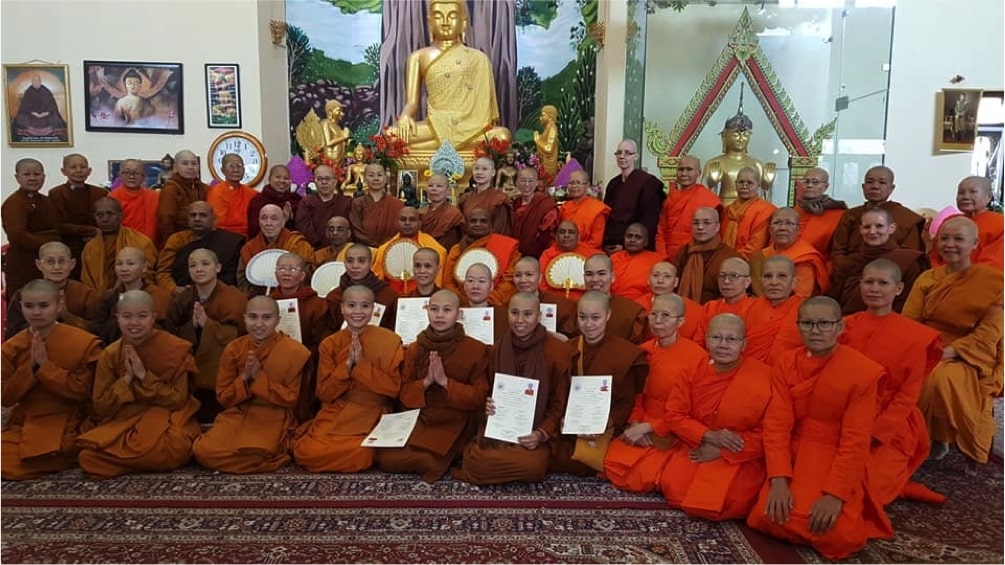Fully accepted, fully ordained. New bhikkhunis with their teachers, preceptors and their ordaining Dual Sangha upon the completion of two full days of bhikkhuni ordinations. Photo courtesy of Kanjana Suthikul
By Ven. Tathaloka Theri
Sukha Sanghassa Samaggi—“Happy is the Harmony of the Sangha” [1]
Buddhagaya, the site of the Buddha’s Great Awakening or Maha Bodhi, is one place on Earth that can be felt truly common to all Buddhists and seekers around the globe. In a world so often riven by strife between its various peoples, it is wonderful to return to the roots of the Jaya Sri Maha Bodhi Tree at the diamond seat of the Buddha’s awakening—in harmony—together. In this spirit, on the 28th and 29th of January 2019, with the patronage and support of the Mahabodhi Society of India Bodhgaya, the first International All Theravada Bhikkhuni Ordination was held in Bodhgaya, the site of the Buddha’s Great Awakening more than 2600 years ago. Twenty-four women novices (samaneri, sikkhamana) from various countries were granted higher ordination and fully accepted as Bhikkhunis by the Dual Sangha of Bhikkhus and Bhikkhunis.
Upasampada means to be “fully accepted” into one of the world’s oldest and longest-lasting intentional communities, the Buddhist Sangha. It also means “to share in the same base of training [in Vinaya, the monastic discipline of the Patimokkha].” To be fully accepted means to be endowed with complete training in Dhamma and the Vinaya discipline established by the blessed Buddha for his monastic community of disciples. According to Vinaya, those who are fully ordained have full rights and full responsibilities in the intentional community of the Blessed One’s Sangha.
The ordinations began on the first day before dawn, with bhikkhuni teachers and novices gathering from various monastic lodgings and pilgrims’ guesthouses around Bodhgaya. In accordance with Sri Lankan tradition, the candidates were dressed in white, and received anew the Pabbajja (“Going Forth”) and Samaneri Precepts at the vihara of the Maha Bodhi Society, with the blessings and instruction of the Venerable P. Seewali Mahathero, the General Secretary of the Mahabodhi Society of India. Then, all the bhikkhunis and samaneri candidates went to the established sima of Wat Lao Buddhagaya International, where bhikkhu and bhikkhuni ordinations can legally be held.
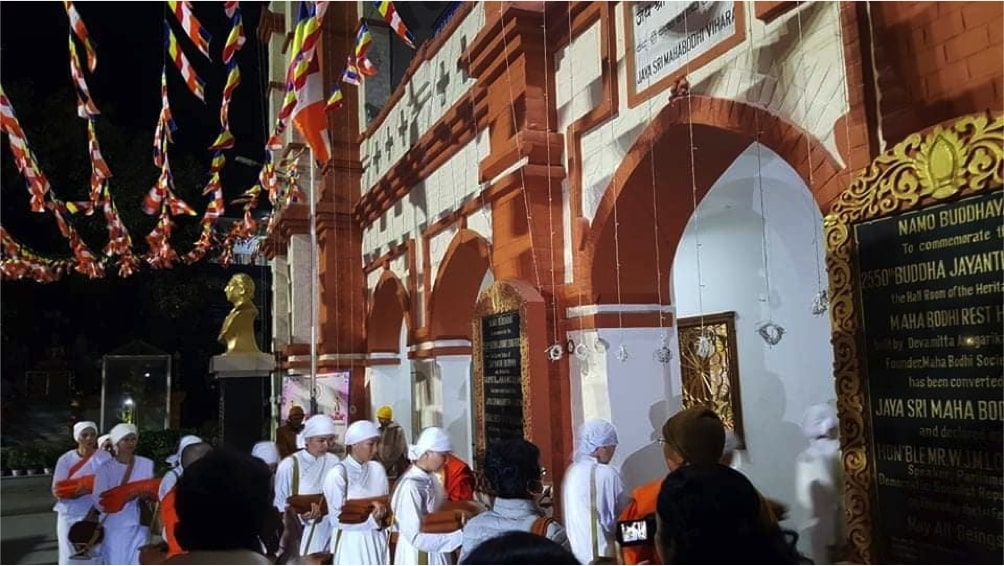
For this Bhikkhuni Ordination, Venerable Vijithananda Theri of Sri Lanka served as the Bhikkhuni Preceptor (Pavattini/Upajjhaya)[2] for the candidates from mainland China, who were first due to their seniority in monastic life.[3] She also served as preceptor for bhikkhuni students from Khemarama (also known as Tịnh An Lan Nhã in Vietnam). Venerable Lieu Phap Viditadhamma Theri served as Bhikkhuni Preceptor for her students from Suññata Bhikkhuni Arama (also known as Ni Viện Viên Không in Vietnam), and Venerable Dhammananda Theri from Thailand served as Bhikkhuni Preceptor for her own students from Songdhammakalayani Bhikkhuni Arama and other locations where she serves as mentor in Thailand.[4]
These three venerable Bhikkhuni Preceptors led the Bhikkhuni Sangha, which included senior bhikkhuni preceptors of five countries and bhikkhuni teachers and leaders of ten countries, gathered in Bodhgaya harmoniously together for this historical ordination. These bhikkhunis included Ven Tathaloka Mahatheri of North America, Ven Santini Theri of Indonesia, Ven Adhimutti from New Zealand, Ven Tissara[5] from Taiwan ROC, Ven Dhammakamala from Thailand, Ven Sumangala from Malaysia, and many more. Bhikkhuni Kammavacacarini officiants Ven Vijithananda Theri and Ven Vinayadharini Theri from Sri Lanka led and conducted the aspiring candidates’ examinations and the formal Acts of the Bhikkhuni Sangha (Sanghakamma) which are essential to Full Bhikkhu/ni Ordination.
After the candidates were examined and fully accepted by the venerable Bhikkhuni Sangha they are “ordained on one-side”: ekato-upasampanna. The venerable Bhikkhu Sangha was then invited into the Sima at Wat Lao International Buddhagaya to confirm and complete the bhikkhunis’ ordinations in the presence of the gathered Maha Sangha of Bhikkhus and Bhikkhunis.
The Most Venerable Seewali Mahathero, General Secretary of the Mahabodhi Society of India, served as the Bhikkhu Upajjhaya for the second half of the ordination, leading up the Bhikkhu Sangha, which included other such great senior bhikkhu leaders as Ven Bhikkhu Bodhi Mahathero of America, Ven Mahindawansa Mahathero[6] and Ven Wimalajothi Mahathero[7] of Sri Lanka, Ven Vupasama Mahathero[8] of Taiwan ROC, and Ven Varasambodhi Mahathero from Bangladesh. Ven Piyaratana Mahathero[9] and Ven Sudhamma Mahathero from Sri Lanka led in the formal Acts of the Bhikkhu Sangha confirming and completing the Bhikkhuni Upasampada of all twenty four candidates. Ven Piyaratana Thero gave the Anusavana Ovada—“The Instruction” directly upon the completion of the Upasampada, instructing the new bhikkhunis in the Three Reliances, the Eight Things Never-To-Be-Done, and the cultivation of the Three Higher Trainings essential to Buddhist monastic life: Adhisila—Higher Ethics & Moral Virtue, Adhicitta—the Higher Mind (through Mindfulness & Samadhi), and Adhipañña—Higher Wisdom.
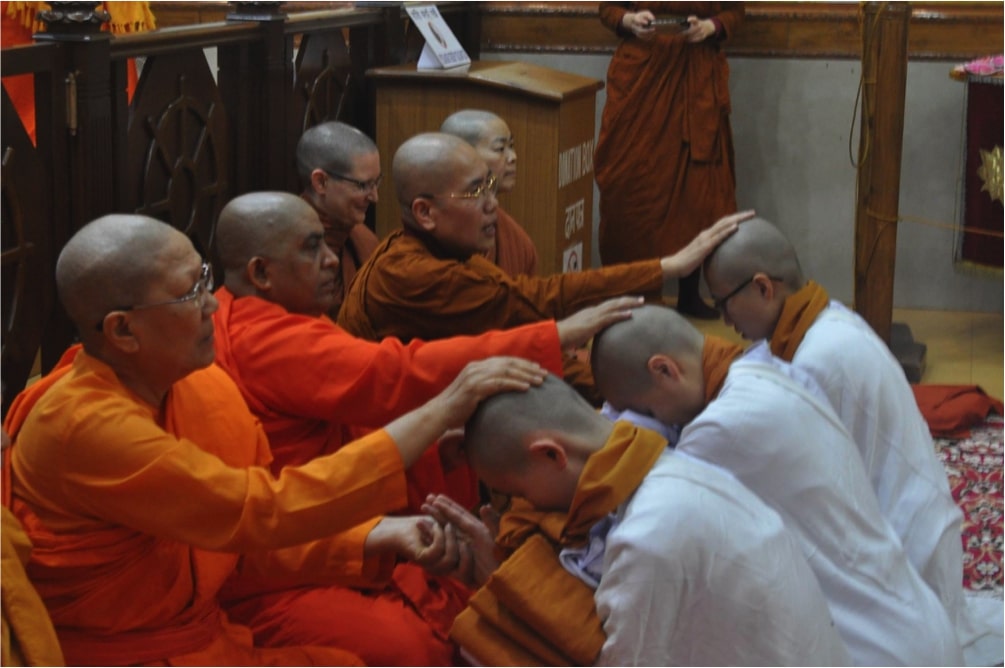
As there were twenty-four candidates, and the Buddha only allowed the ordination of three or fewer candidates at one time, the new bhikkhunis received their ordinations with their preceptors in eight groups of three, going three by three, from morning and afternoon over two days time. At the conclusion of all the ordinations, how joyfully the Sangha chanted blessings[10] all together for the large gathering of newly ordained bhikkhunis filling the center of the hall, surrounded by supportive Sangha. A great mood of rejoicing, happiness and relief spread through the environment, made all the more blessed by the offerings of flowers and Sangha Dana (gifts of useful monastic requisites) made by generous people to the whole Sangha after the ordination.
This was not the first International Bhikkhuni Ordination to be held in Buddhagaya. The historic Bhikkhuni Ordination (which is credited by many with making the greatest strides towards the revival of the Bhikkhuni Sangha in Theravada Buddhism[11]) was held in Bodhgaya just over twenty years ago in 1998. At that time, the Sri Lanka bhikkhunis ordained received Dual Ordination first from the Chinese Dharmaguptaka tradition,[12]and then subsequently were reordained by dalhikamma with the Sri Lankan Theravada Bhikkhu Sangha to change their tradition to Theravada. Since 1998, full Theravada Dual Sangha Bhikkhuni Ordinations have been offered in Sri Lanka. They began to be offered for foreign nationals in Sri Lanka from 2002, to Westerners in Sri Lanka since 2003, for Indians in Nagpur in 2009, in the West itself (Australia and the US) since 2009 and 2010, for foreign nationals in Vaishali in 2012, and in both Germany and Indonesia since 2015.
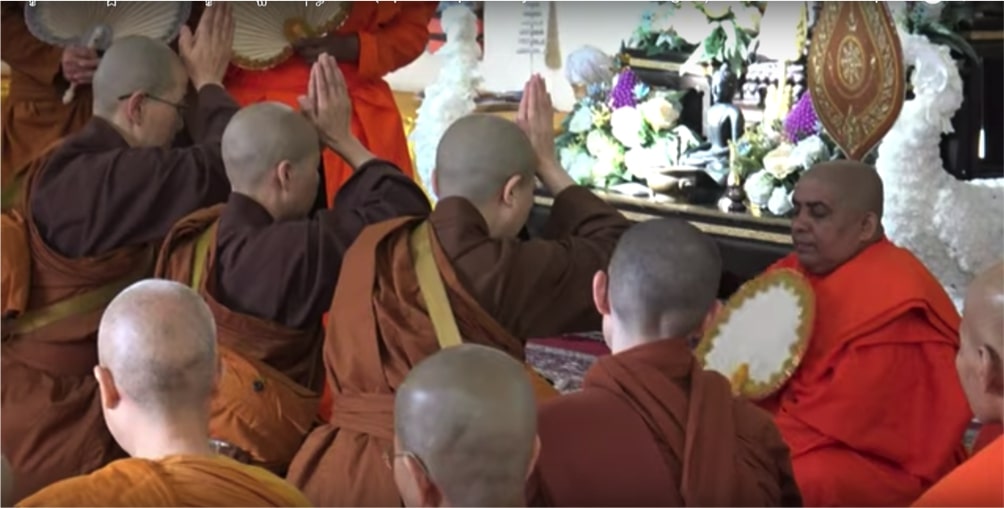
This time was the first time to offer such an ordination fully based upon the Canonical Pali-text Vinaya Ordination Procedure in Bodhgaya, while also including traditional Sri Lankan cultural expressions, in honor of the Sri Lankan teachers and preceptors who led the revival of the Bhikkhuni Upasampada. It was also historic for another reason: three samaneri students from mainland China of Sambodhi Sangha’s founder Ven. Vupasama Mahathero and Sambodhi Sangha teacher Ven. Tissara Bhikkhuni received full bhikkhuni ordination. This means that the Theravada Bhikkhuni Sangha in Mainland China has been [re]established[13] and is a living lineage.
After the International Bhikkhuni Ordination, contemplating the Buddha’s words Sukha Sanghassa Samaggi—“Happy is the Harmony of the Sangha,” other noteworthy and meritorious activities were undertaken while the Sangha was gathered in harmony together. I highlight three here.
First, the preceptors, teachers and new Sangha members joined the Global Conference on “Buddhism and Women’s Liberation” hosted by the Mahabodhi Society of India in Bodhgaya, with Ven. Bhikkhu Bodhi giving the keynote address, and Ven. Bhikkhuni Dhammananda from Thailand receiving a special award for her lifetime service to the Sasana.
Second, during the conference, the idea was proposed that the gathered bhikkhuni preceptors, teachers and leaders of ten countries form a World Theravada Bhikkhuni Sangha Council in order to support the harmonious collaboration and cooperation of the growing transnational Bhikkhuni Sangha, to guide training and ordinations of samaneris and bhikkhunis, and to altogether support the renaissance of the Bhikkhuni Sangha in its homeland of India as well as around the world.
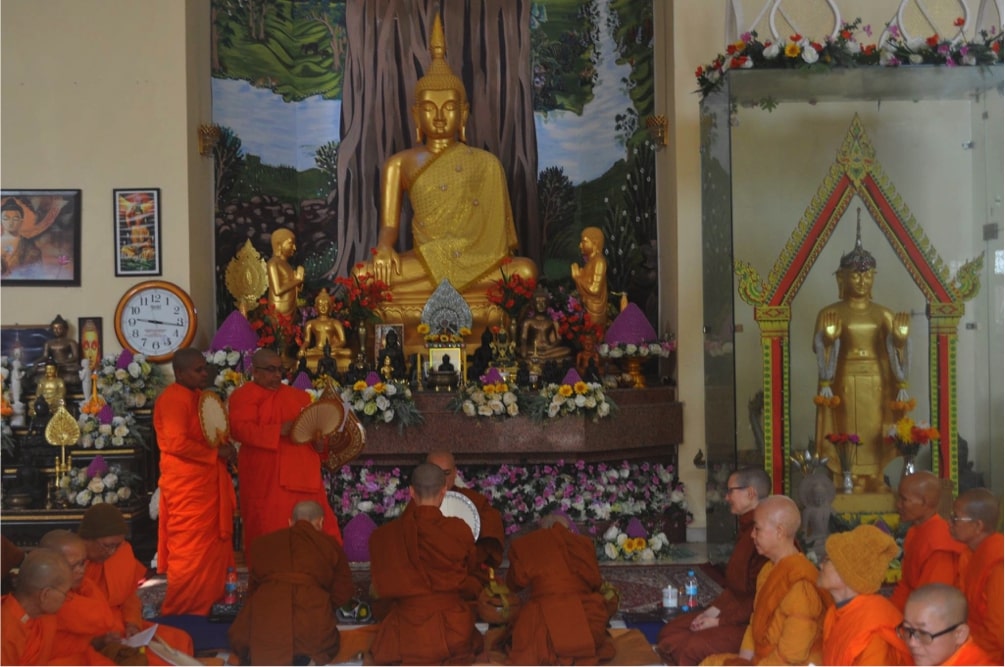
Third, on the last day of the conference, in the chilly winter’s dawn, the new Theravada bhikkhunis, led by senior bhikkhuni teachers, walked in a long line barefoot and bareheaded for pindapata (almsround, pindacariya) through the town of Bodhgaya, coming finally to the Mahabodhi Temple, and then taking their almsmeal, offering flowers and meditating together at the roots of the Jaya Sri Maha Bodhi Tree together, as daughters of the Buddha.
Upon return, their numbers bolstered by the newly-ordained, the Theravada bhikkhunis’ pindapata (almsround, pindacariya) line was also joyfully increased in South Vietnam. Not only was the pindapata line longer, but recitation of the Bhikkhuni Patimokkha has become possible now with full sanghas of resident bhikkhunis.[14] Ten bhikkhunis gathered to chant the Bhikkhuni Patimokkha together at Khemarama Bhikkhuni Arama and more at Suññata Bhikkhuni Arama in Vietnam this past February New Moon Uposatha, a great blessing for the Lunar New Year.
*
Gratitude
On behalf of the entire Bhikkhuni Sangha including twenty-four new fully-ordained bhikkhunis, I would like to offer my gratitude to all of the most venerable bhikkhu and bhikkhuni, kalyanamittas, mentors, guides, preceptors, teachers and Dhamma friends, for your support. Without you, there would be no Path, no vision of “Ehi-passiko” with an open door to enter into and fully join in, cultivate, experience and share the Buddha’s Way. Anumodana! May we practice the Blessed One’s Teachings well and successfully for the benefit of all beings, and the long-lasting benefit and happiness it gives us! Sadhu! Sadhu! Sadhu!
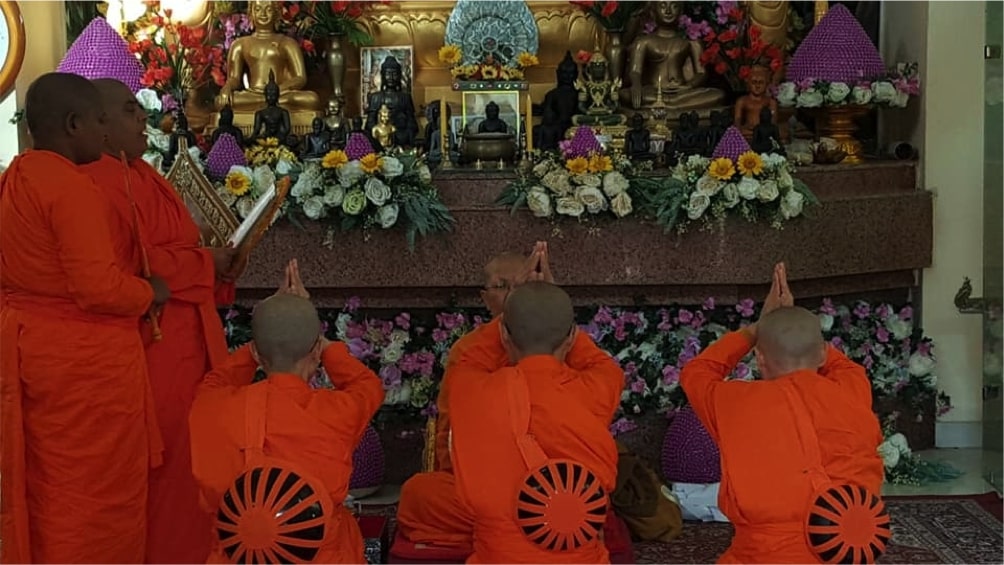
See more
Ven. Bhikkhu Bodhi’s Keynote Address to the 2nd Global Conference on “Buddhism and Women’s Liberation” given 30 Jan 2019 in Bodhgaya
International Bhikkhuni Ordination Bodhgaya: First Half of Dual Ordination (exam and acceptance) with Bhikkhuni Sangha
Further Videos of Conference and Bodhgaya International Bhikkhuni Ordination
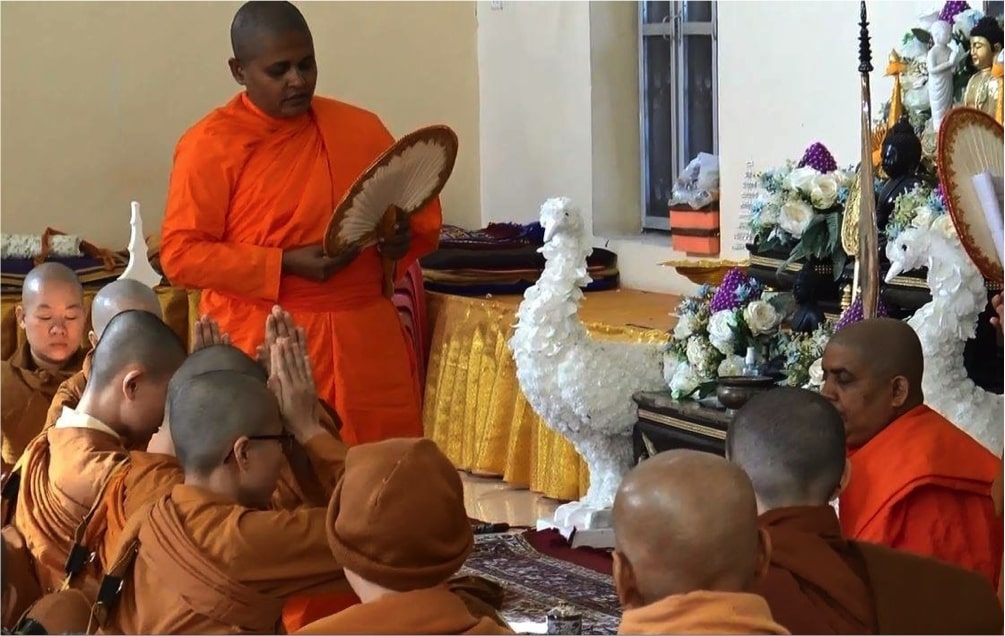
Endnotes
1 The Buddha, Dhammapada verse 194: recited as instruction, blessing and injunction by the Most Venerable P. Seewali Thero on the occasion of the International Bhikkhuni Ordination and subsequent Global Conference on “Buddhism and Women’s Liberation” in Bodhgaya. The full verse is: Sukho buddhanamuppado, sukha saddhammadesana; sukha sanghassa samaggi, samagganam tapo sukho: “Happy is the arising of the Buddha [in the world], happy the Teaching of the Good Dhamma; happy is the harmony of the Sangha together, happy those who together strive in harmony.”
2 The way the Blessed One, the Buddha, established his Sangha before his Parinibbana, a bhikkhu or bhikkhuni is not ordained by any one individual unilaterally. Novice Buddhist monastics may be accepted by one teacher or one preceptor alone, with that teacher/preceptor granting the novice precepts. However, in the Upasampada Higher Ordination, the preceptor (pavattini or upajjhaya) is an advocate and benefactor for the candidates, and serves as a leader of the Sangha. Bhikkhus and bhikkhunis are always ordained by the harmonious coming together of local chapters of qualified members of the Sangha, who are empowered by Vinaya through gathering a quorum in one location (sima), to grant their harmonious acceptance of approved candidates for full admission into the Sangha. Thus, to become a bhikkhu or bhikkhuni in Buddhism is to be fully accepted by the Sangha, into the Sangha.
3 They had been previously ordained as bhikkhunis in the Mahayana tradition, but returned to white and undertook Samaneri Pabbajja and Bhikkhuni Upasampada again together with the other candidates.
4 See Ven Loung Mae Chat Dhammananda Theri’s news release here.
5 Tissara (also romanised as “Tesara,” “Devasara” or “Ayya Sara”) was the name of the leading bhikkhuni from Sri Lanka who brought the Dual Bhikkhuni Ordination to China in the 5th century. Siṅhala Bhikkhunī Tissarā 師子國比丘尼鐵薩羅 is remembered in the Taisho Tripiṭaka in Eminent Monks of the Liang Dynasty by Hui Jao: “The Life of Saṅghavarman”: CBETA T50, no. 2059, 0342b11-c07; Lives of the Bhikkhunīs by Bao Chang, Liang Dynasty: “A Biography of Bhikkhunī Seng-Guo of Kuang-Ling”: CBETA T50, no. 2063, 0939c07; Lives of the Bhikkhunīs by Bao Chang, Liang Dynasty: “A Biography of Pu-Xian Monastery Bhikkhunī Bao-Xian”: CBETA T50, no. 2063, 941a09. As to her name: Gunarwardana speculates “Tesarā”; Bhikkhu Sujato “Ayyā Sārā”. Bhikṣuṇī Jampa Tsedreon has “Devasarā based on the Tibetan “singha la’i dge* slong ma de ba sa rā ,” from (Thu’u bkwan) Blo bzang chos kyi nyi ma. Grub mtha’ shel gyi me long (The Chrystal Mirror of Tenets) (2nd edition). Lanzhou Shi : Kan-su’u mi rigs dpe skrun khang, 1985. *Corrected from de to gde per Ven Jampa Tsedreon. The author of this article finds “Tissarā” most plausible, based on her research in Sri Lanka.
6 Ven. Waskaduwe Mahindawamsa Nayaka Maha Thero served as the Bhikkhu Preceptor for the groundbreaking Bhikkhuni Ordination at Tippayasathadhamma Bhikkhuni Arama in Koh Yoh Island in southern Thailand in November of 2014.
7 Ven. Kirima Wimalajothi Maha Thero is the founder of Buddhist Cultural Centre in Sri Lanka and of founding patron of the Dekanduwala International Bhikkhuni Training Centre of Sri Lanka.
8 Ven. Vupasama Maha Thero and Ven. Tissara Bhikkhuni are the founding teacher and leading teacher respectively of Original Buddhism Sambodhi Sangha which is making great strides in the reintroduction of Theravada Buddhism and early Buddhist teachings to Taiwan and mainland China.
9 Ven. Kalupahana Piyaratana Thero and Ven. Thalangale Sudhamma Thero are known for their ordaining of trees in Sri Lanka for the protection of the environment. Also noteworthy is their support for the full ordination of women in their home country of Sri Lanka since the first international bhikkhuni ordinations in 2002, and more recently, the ordination of bhikkhunis in Thailand.
10 It may be noted that senior mentoring members of the Bhikkhu Sangha who were not able to participate in the Bhikkhuni Ordination also formally offered their blessings to the bhikkhuni ordination preceptors, teachers and candidates before the ordination.
11 The first attempts at reviving the Theravada Bhikkhuni Sangha in serious were in 1988 more than 30 years ago, supported by the author’s own late most venerable preceptor, and were not entirely unsuccessful. The next serious attempts were in 1995, 1996 and 1997 (the author’s bhikkhuni ordination), generating discussion and momentum, leading up to the pivotal 1998 Bodhgaya ordination. See “Honoring Those Worthy of Honor” by the author.
12 One of three of the Early Buddhist Vinaya traditions which still remains; the Dharmagupataka tradition is largely used for Bhikkhu and Bhikkhuni Ordination in East Asian traditions. The Mahaviharavasin Pali-text tradition (used in contemporary South and Southeast Asian Theravada) and the Mulasarvastivada tradition (used in Tibetan Nalanda tradition monasticism) are the other two. Note: none of these are Mahayana or Bodhisattva ordination traditions; those are separate from and may or may not be additional to bhikkhu or bhikkhuni ordination, depending on the tradition.
13 There are differing scholarly and cultural opinions as to whether the bhikkhuni lineage/s established in the fifth century China by bhikkhunis from Sri Lanka is to be considered “Theravada” or not. Early Buddhist teachings are known to have been brought to China in the early centuries of the spread of Buddhist teachings. The Sambodhi Sangha supports a revival of Early Buddhist teachings and practices among Chinese people, including Theravada tradition bhikkhu and bhikkhuni ordination.
14 Previously, the bhikkhunis would need to travel to have sufficient numbers in one place to recite the Bhikkhuni Patimokkha (the 311 bhikkhunis’ precepts) on the New Moon and Full Moon Uposatha Days, and only when visiting bhikkhunis came could it be recited. Now with a full sangha of bhikkhunis in residence, the Bhikkhuni Patimokkha can be recited on the lunar observance days by the bhikkhuni residents themselves.
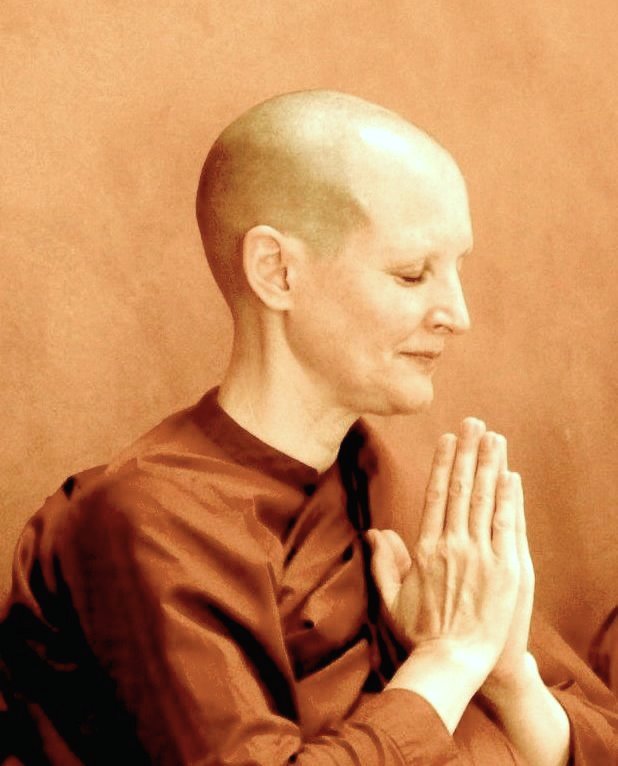
Venerable (Ayyā) Tathālokā is an American-born member of the Buddhist Monastic Sangha. She entered monastic life thirty years ago, and received bhikkhunī upasampadā (full ordination) with the Sri Lankan Sangha in California in 1997, with the late Ven. Havanpola Ratanasāra Mahāthera as preceptor. In 2005 she cofounded Dhammadharini Support Foundation together with the first monastic community for Theravāda bhikkhunīs in the Americas. Inspired by Buddhist Forest traditions, in 2008, she cofounded Aranya Bodhi Hermitage on the Sonoma Coast, and later Dhammadharini Monastery in the Sonoma Mountain area of Northern California. In 2009, she became the first contemporary western woman to be appointed a bhikkhunī preceptor.
Ven. Tathālokā first received instruction in Mindfulness and Insight practices at age ten, further studying and training with Indian, Korean, Thai, Sri Lankan and Burmese meditation teachers, including the Thai forest traditions of the most venerable Ajahn Mun Bhuridatta and the Burmese Vipassana meditation masters Sayadaw U Pandita and Pa-auk Sayadaw. Her practice and teaching are profoundly influenced by the Buddha’s teachings as contained in the canonical Early Buddhist suttas, together with the teachings and practices of Forest and Insight meditation traditions.
For more Dhamma Dana teachings from Ven. Tathaloka Theri, please visit: dhammadharini.net.
Related features from Buddhistdoor Global
Offering Welcome
The 2600th Anniversary of the Global Bhikkhuni Sangha and Fourfold Sangha of the Buddha
The Greatest Gift: “For Our Long-lasting Benefit and Happiness” – Buddhist Teachings on Environment and Human Welfare

